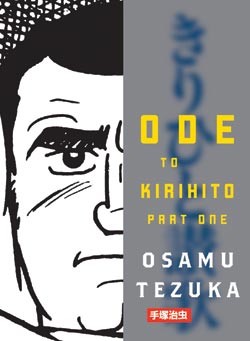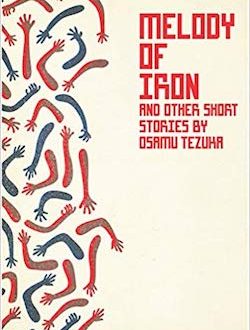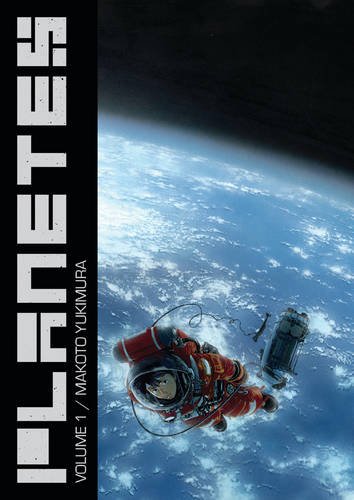For the English-language reader interested in learning more about Osamu Tezuka, there’s a growing body of scholarship exploring his life and work. Frederik L. Schodt, who was a personal friend of Tezuka’s, has done more than just about anyone to introduce Tezuka’s manga to Western audiences, writing in an accessible style that eschews academic formality but is nonetheless rigorous and well-researched. Schodt reproduced a chapter from Tezuka’s Phoenix in Manga! Manga! The World of Japanese Comics (1983), paid tribute to Tezuka’s work with an essay in Dreamland Japan: Writings on Modern Manga (1996), and devoted an entire book to one of Tezuka’s best-known characters in The Astro Boy Essays: Osamu Tezuka, Mighty Atom, and the Manga/Anime Revolution (2007). Readers who find Schodt’s approach congenial should also investigate Helen McCarthy’s recent book The Art of Osamu Tezuka: God of Manga (2009); like Schodt, McCarthy is interested in bringing Tezuka’s work to a wider audience of comics fans and moviegoers, rather than subjecting Tezuka’s work to close readings.
Academics, too, have been exploring Tezuka’s work from a variety of perspectives, as numerous articles in The International Journal of Comic Art, The Journal of Popular Culture, and Mechademia attest. Natsu Onoda Power’s God of Comics: Osamu Tezuka and the Creation of Post World-War II Manga (2009) is among the most user-friendly of these recent scholarly tomes; she writes in a clear, unfussy style that provides readers insight into the historical, social, and economic conditions in which Tezuka lived and worked. Readers may also find Philip Brophy’s Tezuka: The Marvel of Manga (2007) a helpful bridge between mainstream and academic discourse about Tezuka. Though Marvel of Manga is as much a museum catalog as a scholarly work, Brophy’s contextual essays do a fine job of introducing the different stages of Tezuka’s career, as well as some of the themes that were central to Tezuka’s work.
A word about this bibliography: it isn’t comprehensive, nor is it intended to be. What I’ve done is compile a list of resources that a journalist, college student, or serious comic fan would find helpful in learning more about Tezuka’s life and work. The list is divided into three sections: the first focuses on articles and books about Tezuka, the second on websites, and the third on Tezuka’s manga in translation. Please feel free to suggest resources I have overlooked; this list is meant to be a living document, updated on a regular basis.
ARTICLES AND BOOKS ABOUT TEZUKA
Arnold, Andrew D. “Born Again.” Rev. of Phoenix, by Osamu Tezuka. Time 17 July 2004. Web. 21 December 2010.
Bird, Lawrence. “States of Emergency: Urban Space and the Robotic Body in the Metropolis Tales.” Mechademia 3 (2008): 127-48. Print.
Brophy, Philip, ed. Tezuka: The Marvel of Manga. Victoria: National Gallery of Victoria, 2007. Print.
Covert, Brian. “Manga, Racism & Tezuka.” Japan Times Weekly 18 April 1992: 1-4. Print.
Eiji, Otsuka. “Disarming Atom: Osamu Tezuka’s Manga at War and Peace.” Trans. Thomas LaMarre. Mechademia 3 (2008): 111-25. Print.
Gravett, Paul. “The Father Storyteller: The Life and Role of Osamu Tezuka, Originator of Story Manga.” Manga: Sixty Years of Japanese Comics. New York: HarperCollins, 2004. 34-47. Print.
Inuhiko, Yomata. “Stigmata in Tezuka Osamu’s Works.” Trans. Hajime Nakatani. Mechademia 3 (2008): 97-109. Print.
Kuwahara, Yasue. “Japanese Culture and Popular Consciousness: Disney’s The Lion King vs. Tezuka’s Jungle Emperor.” Journal of Popular Culture 31.1 (1997): 37-48. Print.
LaMarre, Thomas. “Speciesism, Part II: Tezuka Osamu and the Multispecies Ideal.” Mechademia 5 (2010): 51-85. Print.
Kinsella, Sharon. Adult Manga: Culture and Power in Contemporary Japanese Society. Honolulu: University of Hawaii Press, 2000. Print.
Ma, Sheng-mei. “Three Views of the Rising Sun, Obliquely: Keiji Nakazawa’s A-bomb, Osamu Tezuka’s Adolf, and Yoshinori Kobayashi’s Apologia.” Mechademia 4 (2009): 183-96. Print.
MacWilliams, Mark Wheeler. “Japanese Comics and Religion: Osamu Tezuka’s Story of the Buddha.” Japan Pop! Inside the World of Japanese Popular Culture. Ed. Timothy J. Craig. New York: M.E. Sharpe, 2000. 109-37. Print.
McCarthy, Helen. The Art of Osamu Tezuka: God of Manga. Foreword by Katsuhiro Otomo. New York: Abrams, 2009. Print.
O’Luanaigh, Cian. “Osamu Tezuka: Father of Manga and Scourge of the Medical Establishment.” The Guardian 21 July 2010. Web. 21 December 2010.
Onoda, Natsu. “Drag Prince in Spotlight: Theatrical Cross-Dressing in Osamu Tezuka’s Early Shojo Manga.” International Journal of Comic Art 4.2 (2002): 124-38. Print.
——— . “Tezuka Osamu and the Star System.” International Journal of Comic Art 5.1 (2003): 161-94. Print.
Palmer, Ada. “‘You, God of Manga, Are Cruel!’: Karma and Suffering in the Universe of Osamu Tezuka.” Manga and Philosophy. Ed. Adam Barkman and Joseph Steiff. Chicago: Open Court, 2010. Print.
Patten, Fred. Watching Anime, Reading Manga: 25 Years of Essays and Reviews. Foreword by Carl Macek. Berkeley, CA: Stone Bridge Press, 2004. Print.
Power, Natsu Onoda. God of Comics: Osamu Tezuka and the Creation of Post-World War II Manga. Jackson, MS: University Press of Mississippi, 2009. Print.
Randall, Bill. “Achieving Godhood in Pen and Ink.” Rev. of Phoenix, by Osamu Tezuka. The Comics Journal 246 (2002): 109-13. Print.
——— . “Behold Japan’s God of Manga: An Introduction to the Work of Osamu Tezuka.” The Comics Journal 5 (2005): 46-57. Print.
Schilling, Mark. “Tezuka, Osamu.” The Encyclopedia of Japanese Pop Culture. Trumbull, CT: Weatherhill, 1997. 263-68. Print.
Schodt, Frederik L. The Astro Boy Essays: Osamu Tezuka, Mighty Atom, and the Manga/Anime Revolution. Berkeley, CA: Stone Bridge Press, 2007. Print.
——— . “A Tribute to the God of Comics.” Dreamland Japan: Writings on Modern Manga. Berkeley, CA: Stone Bridge Press, 1996. 233-74. Print.
Thorn, Matt. “Tezuka’s Modernism.” Introduction. Adolf: The Half-Aryan. By Osamu Tezuka. Trans. Oniki Yoji. San Francisco: Cadence Books, 1997. 7-11. Print.
WEB RESOURCES
Anthropology of Anime and Manga: Site includes a useful overview of Tezuka’s Phoenix saga, with links to English and Japanese resources.
Osamu Tezuka, Father of Manga: Site provides a biography, timeline, and a brief discussion of Tezuka’s influences.
Tezuka in English: Site maintained by American scholar Ada Palmer; provides a comprehensive list of Tezuka’s work in translation, as well as overview of Tezuka’s star system.
TezukaOsamu.net: Official website of Tezuka Productions, Inc. (Link is to English-language content.) Includes summaries of major works, as well as Japanese-language previews of manga such as The Three-Eyed One, Unico, IL, and New Treasure Island.
Wikipedia entry on Osamu Tezuka. See also the Wikipedia entries on Tezuka’s anime and manga, as well as the Wikipedia entry on Tezuka’s star system. The quality of the entries varies considerably; use in conjunction with other sources.
TEZUKA IN TRANSLATION
Adolf. San Francisco: Cadence Books, 1995-97. 5 volumes.
Apollo’s Song. 2nd ed. New York: Vertical, Inc., 2010. 2 volumes.
Astro Boy. Milwaukie, OR: Dark Horse, 2002-04. 23 volumes.
Ayako. New York: Vertical, Inc., 2010.
Black Jack. New York: Vertical, Inc., 2008-10. 12 volumes, ongoing.
The Book of Human Insects. New York: Vertical, Inc., 2011. [N.B. Announced at New York Comic-Con 2010. Also known as Human Metamorphosis.]
Buddha. New York: Vertical, Inc., 2006-07. 8 volumes.
Crime and Punishment. Tokyo: The Japan Times, Inc., 1990.
Dororo. New York: Vertical, Inc., 2008. 3 volumes.
Lost World. Milwaukie, OR: Dark Horse, 2003.
Metropolis. Milwaukie, OR: Dark Horse, 2003.
MW. 2nd ed. New York: Vertical, Inc., 2010. 2 volumes.
Nextworld. Milwaukie, OR: Dark Horse, 2003. 2 volumes.
Ode to Kirihito. 2nd ed. New York: Vertical, Inc., 2010. 2 volumes.
Phoenix. San Francisco: VIZ Media, LLC, 2004-08. 12 volumes.
Princess Knight. Tokyo: Kodansha International, 2001. 6 volumes.
Swallowing the Earth. Gardena, CA: Digital Manga Publishing, 2009.




Mikhail Koulikov says:
Ada Palmer has a much more thorough list on her site, at http://www.tezukaenfrancais.com/TezukaBibliographySept28-2009.pdf, and I’ve been working on an Tezuka section for my Online Bibliography of Anime and Manga Research.
In the meanwhile, you can use my current site to search for any additional items – http://www.corneredangel.com/amwess/acad_1.html (search for Tezuka in the title or the keyword; I’m working on properly marking up all the relevant items as we speak).
– Mikhail Koulikov
Editor, Online Bibliography of Anime and Manga Research
http://www.corneredangel.com/amwess
Katherine Dacey says:
Mikhail: Thank you for the links. When I update the list again, I will be sure to include them.
Recca P. says:
Thanks for the link! I’m so excited to hear that Vertical has picked up Ningen Konchuuki for translation!